
|
ADINA has excellent FEA capabilities ideal for the analysis of different industrial forming processes in which contact, large deformations and material nonlinearity play a major role.
The analysis of forming of both metallic and plastic components can be performed using ADINA FEA. The analysis of hydro-forming of different components can also be accomplished using ADINA FSI.
ADINA offers both implicit and explicit time integration schemes, which can be combined in simulating the entire forming process to maximize the solution efficiency. ADINA’s robust finite strain shell element, as well as its reliable and proven contact technology, are crucial in obtaining physically realistic results in forming analyses.
Some applications of ADINA FEA n forming processes include the analyses of — swaging, blow moulding, hemming, stamping, deep drawing, and rolling. |
|
Aluminium Sheet Combined Tension Leveling & ‘Ribbon’ Slitting / Cutting Analysis |
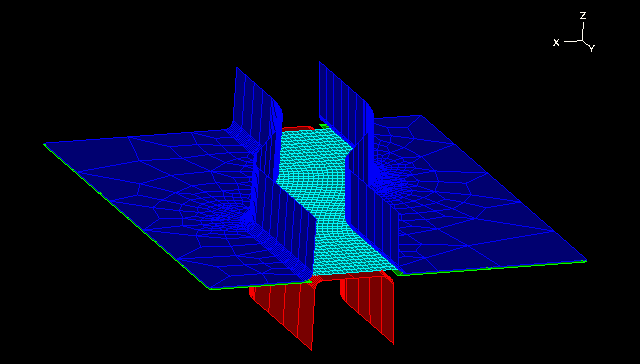
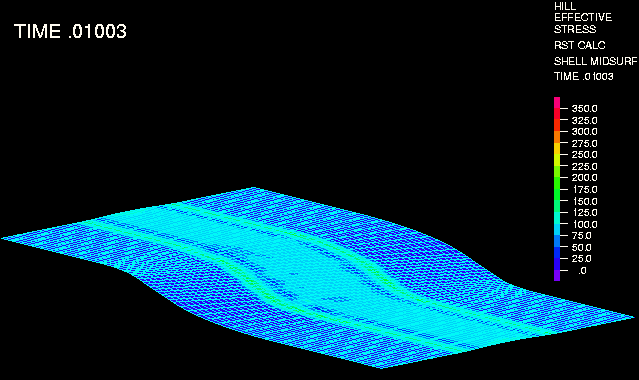
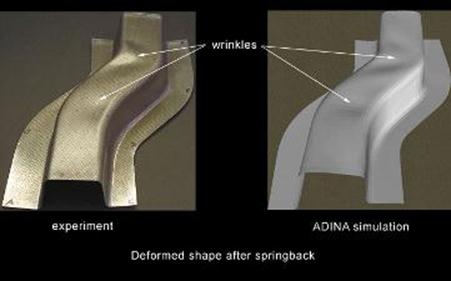
|
The S-Rail part has become a standard benchmark for testing FEA simulation codes in stamping operations. This medium size problem is often used as an industrial benchmark to verify the numerical procedures employed. In our simulation, the tools are modeled using rigid elements as shown in the figure above. The punch is shown in red, the blank holder in green, and the die in blue. The sheet metal (cyan color) is modeled with 4-node shell elements.
This animation above right includes the results of springback in the ADINA FEA simulation. Note the increasing stresses in the part from start to time 1.0. After that, the stresses start to decrease as a result of the springback. We would like to highlight that the solution time for the springback simulation is less than 10% of the stamping simulation time. This percentage is typical for most metal forming simulations using ADINA. Moreover, this is all done in one, single run. |
|
ADINA Structures Simulation of Swaging |
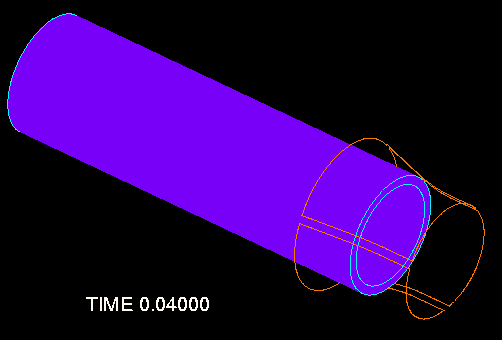
|
Engineers designing swaging operations need to analyze and test several technological parameters before production proceeds. The ADINA FEA System allows real forming processes to be evaluated in a short time, as in this example. The simulation was performed with ADINA's 27 node u/p element, with excellent characteristics that allow the use of only one layer of elements through the tube thickness. The rigid target algorithm, specially adapted to metal forming process simulations, was used with an implicit time integration scheme, thereby enabling the application of the same physical parameters in the simulations without the need for mass or tool velocity scaling. Consequently, the simulation results give the engineers greater confidence that the choice of process parameters will yield a product that conforms closely to specifications. |
|
ADINA FEA / CFD / FSI Simulation of Blow Moulding |
|
Blow moulding is a process frequently used to manufacture hollow plastic objects such as bottles and tanks. A molten plastic tube (parison) is extruded into the mold and pinched at one end. Compressed air is then blown into the parison cavity, which takes the shape of the mould. As the material properties of the parison are highly temperature dependent, the heat exchange between the parison and the blown air is very important during the process. The thermal coupling capability of ADINA FEA / CFD / FSI allows the modelling of such conjugate heat transfer effects. |
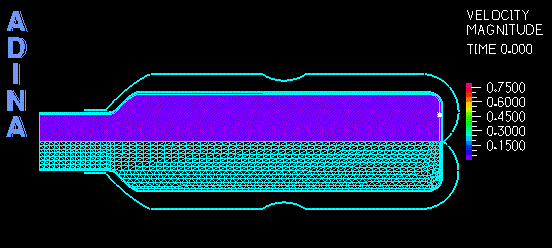
|
The animation above depicts an axisymmetric blow moulding simulation using ADINA FEA / CFD / FSI. The parison is modelled as a temperature-dependent viscoelastic material undergoing large displacements and large strains. The internal part of the mould is modelled as a contact surface and the compressed air is injected using a time-dependent normal traction boundary condition. |
|
ADINA FEA Structures Simulation of Sheet Metal Rolling with Cluster Mills |
|
A study of rolling on a cluster type mill should include analysis of the flexible rollers when the product requires high geometrical accuracy which can be affected by any deformation or deflection of the rollers. |
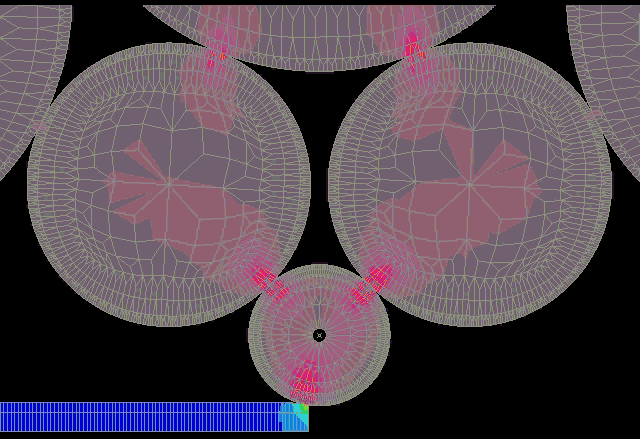

|
Tel: +44 (0)121 703 9236 or e-mail: info@pdslimited.com © Copyright Product Development Services Ltd. All rights reserved 2012 |
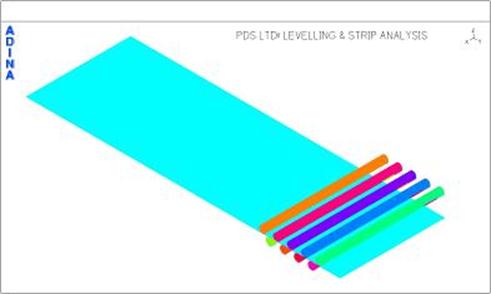
|
This Aluminium Sheet Tension Levelling analysis uses ADINA’s powerful 3D Shell element. Other areas of particular use are Crush and Crash analysis of cars. This 3D Shell augments the standard shell element by including extra ‘through-the-thickness’ strain DOFs. In addition, there are also Warping DOFs to allow for transverse fibres to warp.
This is an Implicit analysis that includes the Levelling and ‘Ribbon’ slitting / cutting process. The Ribbon cutting is used by the Customer for QC purposes.
The top plot shows the original Sheet and Roller configuration. This analysis is for a 1mm thick sheet. Due to symmetry, we have modelled half of the sheet in the longitudinal direction. Click here to view animation files.
The lower plot shows the thinning (percentage) as the sheet is going through the work roller. Click here for more results. |
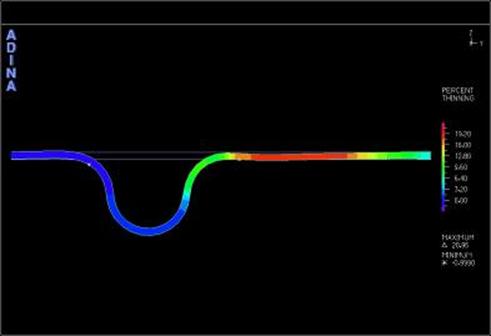
|
INDUSTRIES |
|